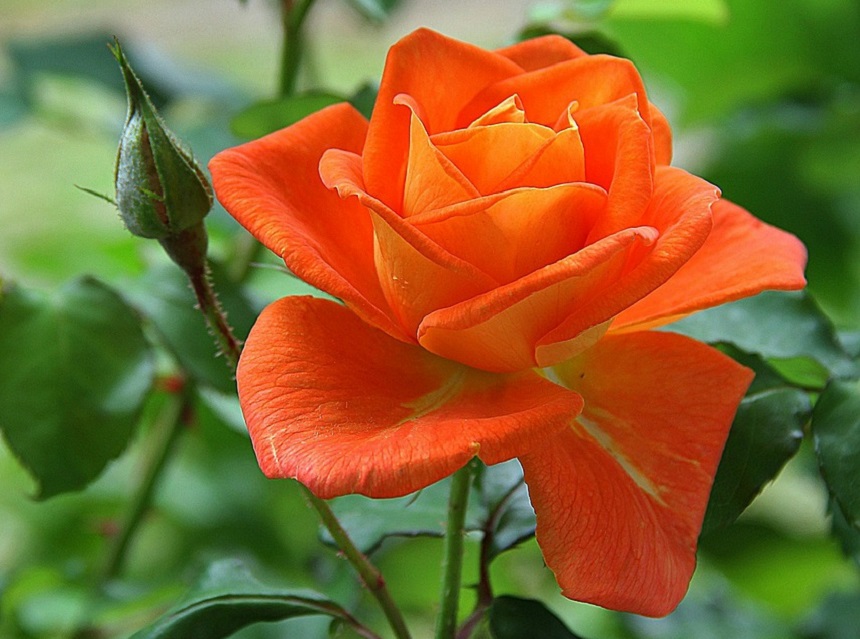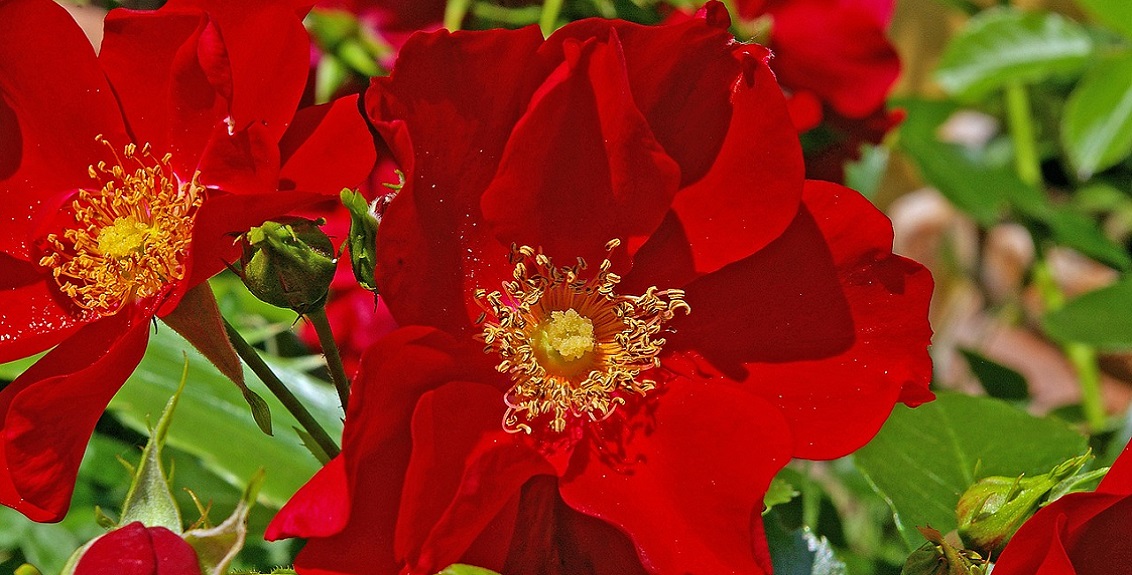Roses
While your roses may not be showing outward signs of growth, the roots are actively growing, and sap is starting to rise into canes. If you prune roses in February as well as doing other care and maintenance tasks, this will set the stage for the show of beautiful blooms to come.
Pruning roses in spring spurs new growth and helps plants recover from winter damage.
Quick Tips
- Cut the stems back to one or two buds always choosing and outward facing bud.
- This keeps the centre of the plant open so you end up with a plant that is wine glass shaped.
- Keeping the centre of the plant open helps air to circulate through the plant to help keep away those fungus diseases.
- Always remove any pruning and leaves from your bed after pruning as this will take away any old diseased leaves and help stop spread of diseases.
Other Care Tips

- Mulch – Mulch helps soil retain moisture and suppresses weeds. If you mulch with an organic material such as mushroom compost or very well composted manure, it will also feed roses as it breaks down.
- Clean – Gather any remaining rose leaves in the planting bed or attached to stems. These leaves can harbour diseases. Destroy or dispose of leaves – don’t compost them.
- Feed – Spring feeding fuels early season growth plus the first wave of flowers. Apply a rose fertiliser for rich blooms. If you added compost around the base of roses, you still want to give them a rose fertiliser. Timing is critical for spring feeding. In regions where cold lingers, don’t fertilise roses until growth begins, or you risk jump-starting growth that could be killed by a late freeze. If a late freeze does zap stems, don’t apply any fertilizer until new leaves unfold. In mild-winter regions, fertilise in February.
- Spray – If you found fungal diseases last season, spray roses as part of your spring rose care regimen while they’re still dormant. A dormant spray will kill spores of black spot and mildew that have overwintered. Proper timing is very important with this spray. Most sprays require at least 8 hours after application without freezing temperatures or rain. Follow label directions carefully. In two weeks, you can follow up with a product that offers systemic protection to control a wider range of pests.

